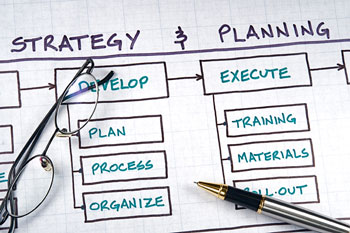 NEW YORK—On the market today, there is a wide variety of software solutions for eyecare practices. For just about every business and health care need, there is a system or tool out there. But for your practice, EHR software is probably the most important piece of what makes your practice spin and allows you to manage and provide a high level of care. But what about when your system isn’t meeting your expectations and it’s time to look for something better?
NEW YORK—On the market today, there is a wide variety of software solutions for eyecare practices. For just about every business and health care need, there is a system or tool out there. But for your practice, EHR software is probably the most important piece of what makes your practice spin and allows you to manage and provide a high level of care. But what about when your system isn’t meeting your expectations and it’s time to look for something better?
We’ve got a quick list of three phases that every practice goes through when they realize it’s time to start looking for a new EHR software. We’ll walk you through these phases of what to expect and offer a few tips for making it through each stage successfully so that in the end you up with a software system that exceeds your practice needs and improves your office efficiency.
3 Stages Every Practice Goes Through When Buying EHR Software
Stage 1: Signs You Are Ready
Unless you’re opening up your practice cold, you’re currently running the practice on paper, or you’re already using an EHR software. Whatever system you use, your entire practice and workflow revolves around the system, which is what makes your solution such a critical piece to your practice’s overall success. Most practice’s will start by recognizing some common system issues that result in them getting out on the market for a new system. Some of these common issues or red flags could include things like:
- Infrequent System Updates – Technology is constantly evolving, and your practice should be too. If the system you use doesn’t get consistent updates that gives you new features that can improve your workflow each time they are released, you should consider a cloud-based system where updates occur easily and more frequently than most client-server solutions.
- Workflow Bottlenecks and Inefficiencies – Your system should be making your day-to-day jobs easier, not harder. If your workflow is always hitting the same bottlenecks or inefficiencies with complicated work arounds you’re not able to perform your job at your best. Look for a system that is customizable, easy to look at and reduces data entry tasks.
- Difficult Hardware to Maintain – Client-server solutions take up space and require a good amount of IT knowledge in order to maintain, secure and update—which usually results in added costs for an IT consultant. Cloud-based systems eliminate the need for your practice to be responsible for an in-house server, and updates are taken care of by the vendor.
Stage 2: Software Research
Now that you’ve seen the signs that your practice might be ready for a software change, you need to take full advantage of the time you take to shop for a system. It can be time consuming doing your research, setting up demos of different systems and ultimately making a decision. Once you’ve narrowed down your choices it’s important to go into the demo process prepared with the right questions to ask.
When it comes to asking the right questions, there are 5 categories of questions you should remember to consider. These include questions about the system technology, specifics of the EHR, the comprehensiveness of the system, training and support, and costs. You should try and be consistent with the questions you ask each vendor so in the end it’s easier for you to stack up the competition and weigh the pros and cons.
Free Download: 50 Questions You Should Ask Every EHR Software Vendor
Stage 3: Migration and Training
Once you’ve selected the right system for your practice, you have the task of migrating, implementing and learning a new system. This can seem overwhelming for a practice that needs to also be able to manage its schedule of patients day in and day out.
One thing that we think is really important is to get staff buy in on the purchase decision. The change will affect their day to day just as much as yours and you need them to be excited and motivated by the switch. Bringing your team in on the buying journey to better understand their specific workflows and what they need in a new system will lead to a more productive implementation and training process for everyone involved.
Whether you’re switching from paper or an old system, you need to understand how your current patient data is going to transfer over to the new system and what will be needed from you. If you’re switching from paper you have a variety of options on how to transfer paper records to the EHR. If your switching from one software to another you’ll need to talk with your vendors about the best migration solution.